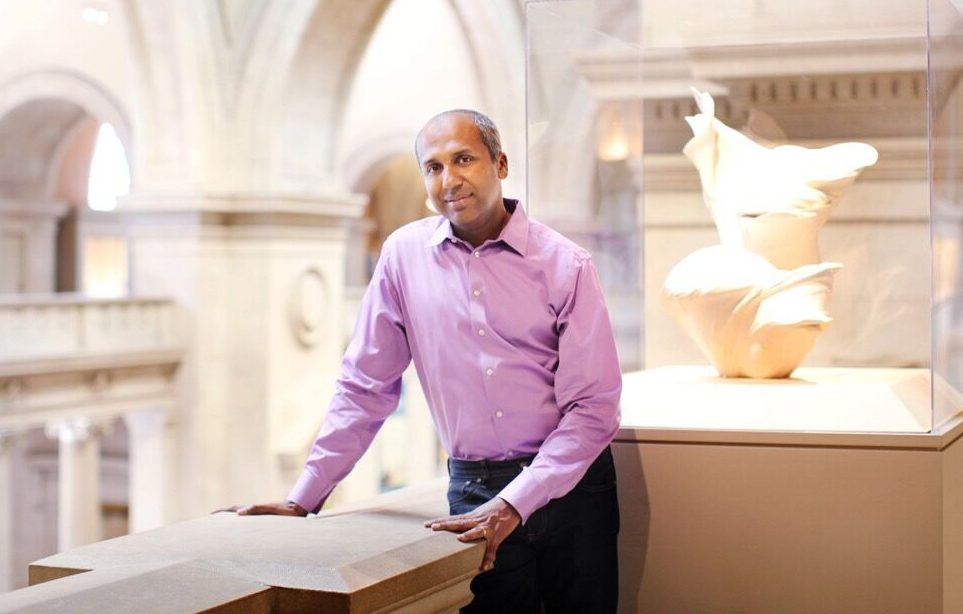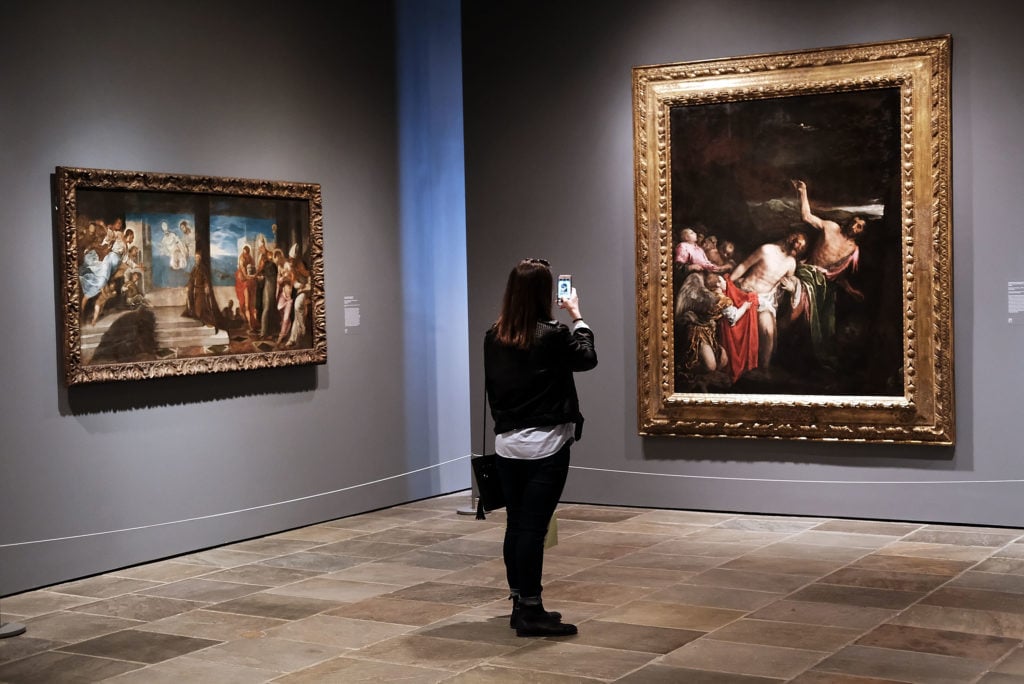Art World
What NYC’s Chief Digital Officer Sree Sreenivasan Wants Museums to Know
The Met's former digital director wants curators to step up.

The Met's former digital director wants curators to step up.

Digital Pioneers is a series of interviews that explores the impact of social media on the future of the art world.
When Sree Sreenivasan stepped down as the Metropolitan Museum of Art’s chief digital officer in June, many wondered where he’d land next. Less than two months later, mayor Bill de Blasio announced that the digital media powerhouse would reprise the same role for the city of New York, succeeding Jessica Singleton.
Sreenivasan is credited for implementing a number of successful initiatives during his term at the Met, including the creation of a museum app and a video series featuring interviews with artists such as Kehinde Wiley, Tom Sachs, and Lisa Yuskavage, among others.
We caught up with Sreenivasan a few weeks before he takes the helm as the city’s CDO on October 17. “I’m standing on the steps of the Met as I talk to you now,” Sreenivasan told artnet News over the phone. “I’ve had folks ask: Are you still involved with the Met? I say: Absolutely.”

The Met Breuer. Courtesy Spencer Platt/Getty Images.
What are you up to these days?
I’m in the middle of in-between gigs. It’s unusual to announce that you’re taking a new job and have two months before it starts, but it’s been a nice little break for me. I have some consulting projects that I’m working on with a couple of different art museums. I’m mainly working on getting ready for a challenge and an opportunity of a lifetime: to work with the city of New York.
In the years leading up to this new role, you were the digital director at Columbia University, and then at the Metropolitan Museum of Art. Tell us about some surprises you encountered during your tenure at the Met.
I’d gone in expecting an unwillingness to try new things because it’s so old and venerable, but everybody jumps on board on anything new that anybody does. It helped that digital and mobile were all in the air. It was certainly the right moment.
Having come from academia, where people are very careful about how they interact with the public, what surprised me, when I compare academia and museums, is that the university will learn how to make rock stars out of their faculty, and I was surprised how museums—and not just the Met—haven’t pushed their faculty in the same way: in the museum’s case, their curators and their scientists. We’re in a world where everybody is interested in behind-the-scenes connections with institutions and anything that humanizes institutions. I believe curators can play a greater role. But I was glad to see how many people embraced doing more.
Tell us some strategies museums can use to leverage their digital presence.
I think that as we see more and more websites become critical of sharing information, the value of museums’ websites are going to change. Websites are still very important for research, and scholarly work, and for audiences to find material, but people in the art world should say: “We want people to see our content no matter where it is. It doesn’t matter if it’s on our website. Let’s get it out there.”
At the Met, we spent a lot of time doing WeChat and Weibo, because China is becoming the largest source of in-person visitors. We needed to make sure we did everything there.
What strategies can museums use to promote their curators?
I love what Boston MFA did in a recent exhibition, which had the curator’s face and name and why she picked this topic now. It gives a sense of transparency and clarity as to why this matters. I am for having a strong institutional voice, but also having a voice that speaks for individuals within the organization, who have their own following. It makes a difference in the long-term. We’re used to people hearing directly from sports stars and celebrities and musicians. The rest of the art world needs to think about it that way as well, and I think finding that balance is going to be important. Just the way we live in a preview culture, where you can read the first chapter of every book, we should do more of that with our exhibitions.
Do you think these strategies are applicable across industries?
I think they definitely are, and I think they will make a difference in big institutions like cities, big governments. We’re going to see, no matter who becomes the next president over the next four years, how different offices within different departments are going to be more personality-driven. And that’s going to be interesting.
Anything else you’d like museums to know?
Over the last two years, I’ve dealt a lot with other museums because I think we all need to be collegial. I did a lot of work from a distance with other museums, but this is the first time I did consulting for museums, and I think all museums are roughly in the same boat in terms of thinking about these issues. Everyone has their own circumstances, and I’m not at liberty to talk about them, but it’s heartening to see how similar circumstances are.